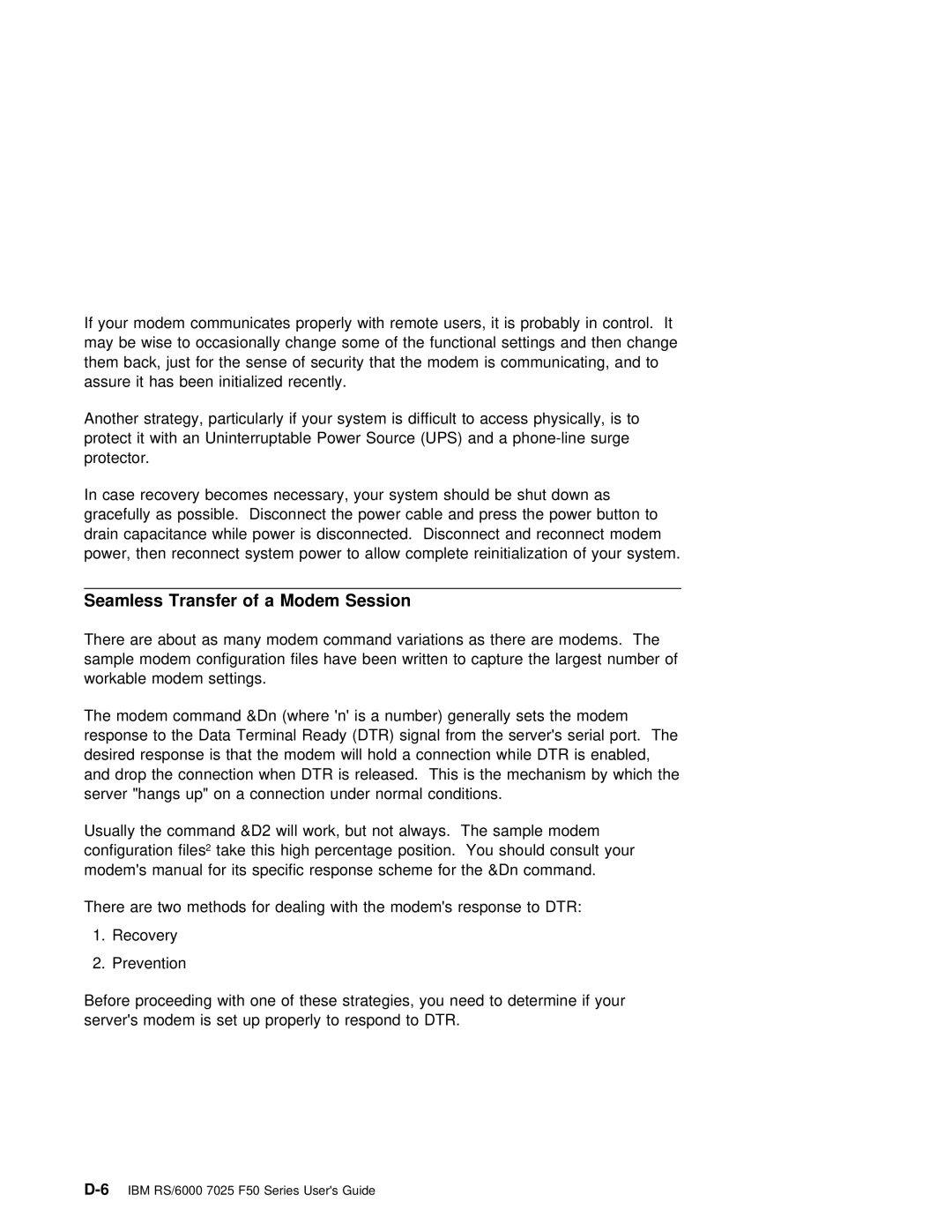If | your | modem | communicates properly | with | remote users, | it is probably | in control. It | ||||||
may | be | wise | to | occasionally change | some | of | the | functional | settings and | then | change | ||
them back, just for the sense of | security | that | the | modem | is communicating, | and to | |||||||
assure | it | has | been initialized recently. |
|
|
|
|
|
|
| |||
Another strategy, particularly if your system is difficult to access physically, is to protect it with an Uninterruptable Power Source (UPS) and a
In case recovery becomes necessary, your system should be shut down as gracefully as possible. Disconnect the power cable and press the power button to drain capacitance while power is disconnected. Disconnect and reconnect modem
power, then reconnect system power to allow complete reinitialization of your system.
Seamless | Transfer |
| of a | Modem | Session |
|
|
|
|
|
|
|
|
|
|
|
| |
There | are | about | as | many modem command variations as there | are | modems. The |
| |||||||||||
sample modem configuration files have been written to capture | the largest | number of | ||||||||||||||||
workable | modem | settings. |
|
|
|
|
|
|
|
|
|
|
|
| ||||
The modem | command | &Dn | (where 'n' is a number) generally sets |
| the | modem |
|
| ||||||||||
response | to | the | Data | Terminal | Ready | (DTR) signal | from | the | server's | serial | port. The | |||||||
desired | response | is | that the | modem | will | hold a | connection | while | DTR | is | enabled, | |||||||
and drop the connection when DTR is | released. This | is | the | mechanism | by | which the | ||||||||||||
server "hangs up" on a connection under normal conditions. |
|
|
|
|
|
| ||||||||||||
Usually the command &D2 will work, but not always. The sample modem |
|
|
| |||||||||||||||
configuration 2filestake this high percentage position. You should consult | your |
|
| |||||||||||||||
modem's | manual | for | its | specific | response | scheme | for | the &Dn | command. |
|
|
| ||||||
There are two methods for dealing with the modem's response to DTR:
1.Recovery
2.Prevention
Before proceeding with one of these strategies, you need to determine if your server's modem is set up properly to respond to DTR.
